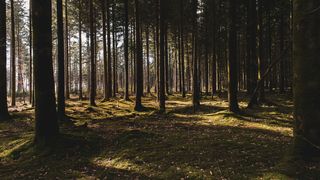Environment
What We Can Learn From Trees
Beyond their value in nature, trees may hold insights for humans
Posted February 10, 2020 Reviewed by Lybi Ma
A forester from Germany became a nature rock star a few years ago with a book that challenged notions many of us hold about trees. The first time I read his book, it made me smile at the facts and trivia I learned about trees. I’m rereading The Hidden Life of Trees by Peter Wohlleben (2016) and this time around, I’m seeing lessons that could be useful for humans.
Because he managed and lived in forests around Germany, Wohlleben spent a lot of time observing, then reading about and studying trees. He says, for example, that trees communicate with and care for each other, share food, provide habitat for many types of insects and animals, and can help humans become and stay healthy. Here are three other ideas, though, that may give humans insight about our own lives.
Being old is being strong.

In forestry school, Wohlleben learned that young trees are “more vigorous and grow more quickly than old ones.” Smash that assumption right now. In 2014, a group of researchers published a study of 700,000 trees, across every continent, and discovered that, in fact, older trees grew more quickly and were as or more healthy. As he says, “being old doesn’t mean being weak, bowed and fragile.”
How would humans interpret this? Should we reframe old age from being weak, bowed, and fragile to just being stronger, in a different way?
Slowness trumps speed.
When Wohlleben realized that “parent” trees force offspring to grow slowly, he was surprised. Two-hundred-year-old “mother beech trees,” for example, shade the young ones, creating a canopy overhead that allows very little light to penetrate, thus slowing their growth. But why? In fact, scientists learned that slow growth in the young helps them live longer and become stronger. As they grow more slowly, they remain flexible (resistant to storms and wind) and become tougher in the fight against damaging fungi. By the time the trees are eighty, they are entering adolescence stronger than ever.
This makes me wonder if humans grow “too fast,” especially as life expectancy increases. Do we need a better way to “pace” ourselves to be stronger for the long run?

Community support.
Most trees thrive when they grow close together, contrary (again) to what Wohlleben learned early in his career. Rather than culling trees, the better approach is to cluster them. Even more interesting, one study found that a group of beech trees synchronizes their rate of photosynthesis, despite differences in soil, water levels, or nutrients, allowing them to equalize the resources available so that all trees can do well, distributing water and nutrients to the community, helping weaker trees to stay strong as well.
This raises yet another question: Are you better within a community or as a lone “tree?”
References
Wohlleben, P. (2016). The Hidden Life of Trees. Vancouver, CA: Greystone Books


